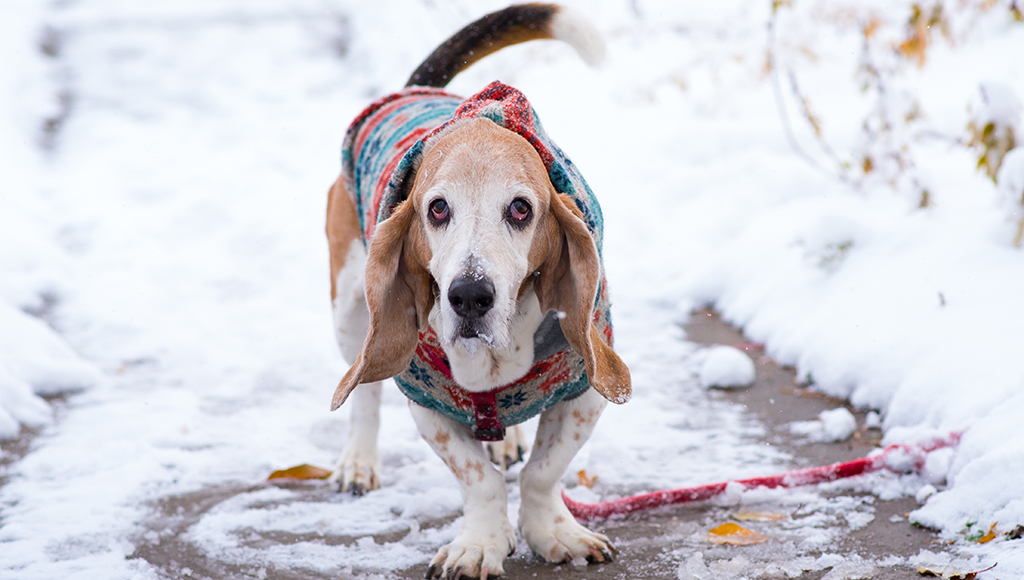Winter Weather: Pet Health Hazards
Take the first step in protecting your pet from Frostbite by learning the warning signs and first aid responses.

What is Frostbite?
Animals have ways of dealing with cold temperatures. However when exposed to extreme freezing temperatures for an extended period of time these same mechanisms that work to keep them warm and alive can actually cause damage and death to the tissues of their extremities such as the tips of their ears, tail, and the pads of their feet. This condition is more commonly known as frostbite.
When a dog or cat is exposed to cold temperatures its body reacts in stages:
- Your pet's fur provides insulation just like wearing a coat protects us. Its hairs, when exposed to cold air undergo pilo-erection. This is compared to you and I getting goose bumps. The hairs "stand up erect" trapping the air in that layer. This air is warmed by the animal’s body and adds additional insulation to keep the pet warm.
- When the body's core temperature decreases, an involuntary reflex by the skeletal muscles known as "shivering" is triggered to generate heat and warm you up. Animals experience this same reaction.
- When the body is really getting cold and the animal’s life may be at risk, its body responds by vaso-constricting the peripheral tissues, which means the body is being selective about where it is sending warm blood.
- The vital organs are the most important to keep an animal and human alive, therefore the blood circulates in the core of the body (heart, liver, kidney lungs,) It shuts down temporarily by constricting blood vessels headed to the extremities (arms and legs for humans, tail, ears, paw pads in animals) until the body's temperature returns to normal.
- If a cat or dog has not received “first-aid” or warmth on it's own by the time it has reached this stage, frostbite will develop. Tissues that have frozen due to this bodily response die. Cats and dogs often experience frostbite on the tips of their ears, tails, face, footpads, legs and the genitalia in male dogs.
- Frostbite can result in the loss of limbs, toes, and tips of ears.
Signs and Symptoms to look for if your pet has been outdoors and you suspect it may be suffering from frostbite:
- Ice on body and limbs (don’t forget to check its belly and underside and genitalia in males)
- Shivering
- Tissues are bright red followed by pale color (vaso-constriction) to black color (death of tissue/sloughing of skin)
First Aid:
- Warm the affected area rapidly with warm water using towels or warmed ice packs
- If it is a limb or paw that is frozen, soak it only in a bath or bowl of warm water- Dry gently after you have the warmed the area
- Do not rub or massage the frozen tissue
- Do not apply snow or ice
- Do not immerse your pet completely in a bath this will cause the body temperature to decrease and cause hypothermia.
Prevent Self-trauma
When the tissues are warmed it may cause some discomfort to your pet. The same also occurs when tissues are dead. Wrap your pet in a blanket to prevent self-trauma and keep him or her warm. Secondary infections can sometimes result from gangrene tissues.
Seek Veterinary care immediately!
Ready to start saving money on pet wellness care?
Then take a look at Mint Wellness, the pet wellness plan that provides fast reimbursement on routine pet care. Save on vaccinations, wellness exams, preventatives, dental, and more!
Learn More


